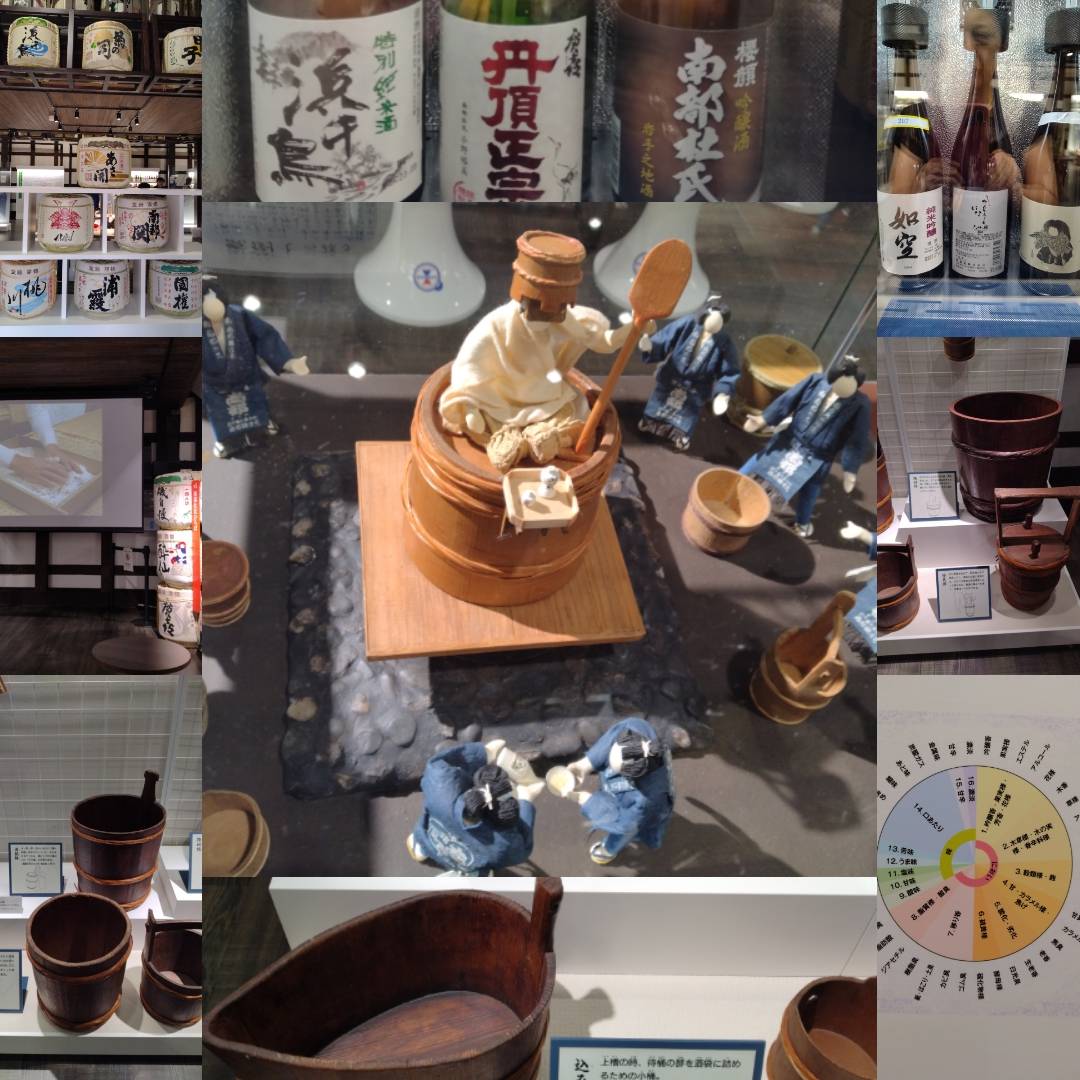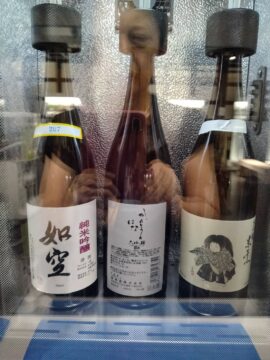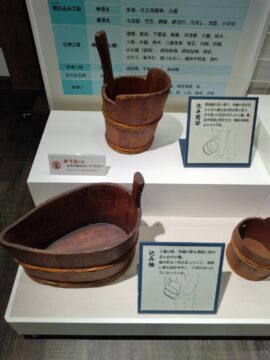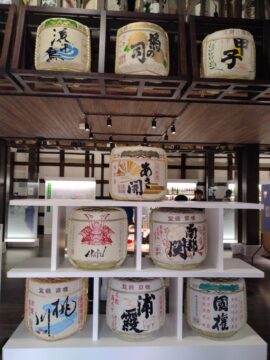【発酵ソムリエ】南部杜氏の特徴は?日本一の職人集団・・・
貧農に生まれても副業で「杜氏」として地方の酒蔵で「責任者」になれた事実・・・!
江戸時代以前から南部藩領内で酒造りが行われていたものの、自家醸造の域を出るものではなかった。
その後、慶長11年(1606年)ごろ、南部藩の御用商人であった村井氏・小野氏が上方から大量仕込み樽の製法をもたらしました。
南部藩のバックアップを受けて盛岡城下で本格的な藩造酒の生産を始めました。
南部杜氏の酒造技術は、専従杜氏と農民杜氏という二つのタイプの技術者によって分かれ、蔵元は両者を結びつけて技術の向上を図りました。
このプロジェクトは藩、商人、農民が協力し、領内での酒造りを成功させました。藩領内の造り酒屋は急増し、江戸からの注文も受けるほどになりました。
貧農に生まれても「杜氏」という副業で地方の酒蔵の「責任者」になることができたわけです。
南部杜氏の技術は地域外にも広がり、特に仙台藩に多くの杜氏が訪れ、文化交流が行われました。
明治時代には南部杜氏の技術はさらに発展し、南部杜氏の組織化が進みました。南部杜氏は国内最大規模の流派を形成しました。
明治時代には政府による酒税の増加と酒造業の近代化が進み、南部杜氏もそれに対応しました。
南部杜氏自らの手によって南部杜氏組合が結成され、酒造従業員の組織化や技術の向上が図られました。
南部杜氏伝承館 | 観る【花巻観光協会公式サイト】 (kanko-hanamaki.ne.jp)
昭和時代以降も南部杜氏の伝統は続き、南部杜氏協会が設立されました。
会員数は一時的に増加しましたが、現在は減少傾向にあります。南部杜氏は全国に分布し、酒造講習会や鑑評会を通じて技術の向上を図っています。
このように、南部杜氏は長い歴史を持つ酒造の伝統を築き、地域社会との協力を通じて技術の向上と発展を遂げてきました。
#発酵ソムリエ #南部杜氏 #近江職人 #南部杜氏伝承館 #岩手観光
- 地域の風土: 岩手県の地域環境や気候条件が、南部杜氏の酒造りに大きな影響を与えています。これには、地元の水質や気温、湿度、米の品種などが含まれます。
全国に散っていったときには、近江商人が手伝いました。 - 硬質の水: 南部杜氏の酒造りには、硬水(硬質の水)が使われます。この水は、お酒の味わいに独自の風味とミネラルを与える役割を果たします。もちろん軟水のところでは苦労したと思われます。
- 乳酸菌: 乳酸菌は、酒造りプロセスで重要な要素であり、南部杜氏はこれを活用します。乳酸菌は、酒の酵母と組み合わせて、発酵プロセスの制御や味わいの形成に寄与します。
- 蔵付き酵母: 蔵内で酵母を培養し、管理することが南部杜氏の伝統的な手法です。この酵母は、特有の酒質や風味を生み出すために夜を通じて丹念に糀をとかします。
「櫂でつぶすな、糀で溶かせ」が合言葉です。 - チームワーク: 南部杜氏の酒造りは、単独の作業ではなく、チームで協力して行われます。夜を通じて酵母の管理や醸造プロセスの監視が行われ、品質の維持に取り組まれます。
これらの要素が組み合わさり、南部杜氏のお酒は岩手県独自の風味や品質を持ち、学際的なアプローチで醸造されています。
場所は、昔御用酒場だった岩鳥谷。コインで試しのみができ、お食事処、お土産も買えます。
#発酵ソムリエ #南部杜氏 #近江職人 #南部杜氏伝承館 #岩手観光
The fact that one could be born into a poor farming family and still be “in charge” of a local brewery as a “toji” on the side…!
Although sake brewing had been practiced in the Nanbu domain since before the Edo period, it was not beyond the realm of home brewing.
Later, around 1606, the Murai and Ono clans, who were the official merchants of the Nanbu domain, brought the method of mass brewing barrels from Kamigata.
With the backing of the Nanbu clan, full-scale production of clan brewed sake began under Morioka Castle.
The Nanbu Toji’s sake brewing techniques were divided between two types of technicians, the full-time toji and the farmer toji, and the brewery brought the two together to improve their skills.
The clan, merchants, and farmers worked together on this project to successfully produce sake in the territory. The number of sake breweries in the domain increased rapidly and even received orders from Edo (now Tokyo).
Even those born into poor farming families were able to become “managers” of local sake breweries through the sideline job of “toji.
The skills of the Nanbu Toji spread outside the region, especially to the Sendai clan, where many Toji visited and engaged in cultural exchange.
During the Meiji period (1868-1912), the Nanbu Toji technique was further developed and the Nanbu Toji became more organized. The Nanbu Toji formed one of the largest schools in Japan.
During the Meiji period, the government increased taxes on sake and modernized the sake brewing industry, and the Nanbu Toji responded accordingly.
The Nanbu Toji Association was formed by the Nanbu Toji themselves to organize sake brewing employees and improve their skills.
Nanbu Touji Toji Tradition Hall | View [Hanamaki Tourism Association Official Website] (kanko-hanamaki.ne.jp)
The Nanbu Touji tradition continued after the Showa period (1926-1989), and the Nanbu Touji Association was established.
The number of members increased temporarily, but is now on the decline. Nanbu Toji are distributed throughout the country, and their skills are improved through sake brewing workshops and sake competitions.
Thus, the Nanbu Toji have established a long tradition of sake brewing, and have improved and developed their skills through cooperation with local communities.
#Nambutoji #fermentationsommelier #Sakebrew #Iwate #Tojidirector





